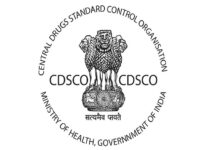Phesi Inc., a data-driven provider of AI-powered clinical development analytics and solutions, has released the results of its global analysis of all clinical trials conducted in 2021. The data show that breast cancer was the most studied disease area, followed by COVID-19. Overall, oncology dominated the top five, which also included non-small cell lung cancer, solid tumors and multiple myeloma (fig 1.).
“The fact that oncology takes four of the top five spots for most studied disease area underlines its status as the area still receiving the most investment – and it is good news for patients that even as the biggest public health crisis for 100 years is ongoing it is still taking the top spot,” commented Dr Paul Chew, Chief Medical Officer, Phesi. “Breast cancer affects 2.2 million people a year globally and is the second most common cancer in women in the United States, making up about 30% of all new female cancers each year. Over the last decade, studies in HER 2+ and triple-negative breast cancer have contributed to significant advances in prolonging survival in these patients. Our analysis shows a lot more is being done to ensure we find better ways to prevent, detect and treat all cancers. We’ll continue to see high levels of investment in oncology throughout 2022, and we expect to see more emphasis among sponsors on making data-driven decisions to drive more successful trial outcomes.”
Within breast cancer clinical development 25,000 investigator sites have been solely dedicated to recruiting patients since 2017; this trend was not impacted by COVID-19 (fig 2.); this includes pharma and academic studies and the same investigator sites involved in multiple trials. This means an average of 5,000-7,000 people are continually working on breast cancer clinical trials, with Phesi’s model showing this is likely to continue. This is not only hugely costly but is also not sustainable. The analysis also reveals that the typical trial recruited between 100 to 150 patients, with the optimal number of sites to achieve an efficient enrollment time being around 40. The typical enrollment cycle time in this case was approximately 650 days. However, only 14% of trials analyzed were optimized. Data show that fewer or more sites than 40 increased enrollment cycle time, and therefore caused delays to the trial as a whole.
Looking at breast cancer trials geographically, recruitment in the USA is aligned with global trends (fig 3.). In China, it has increased from 300 to more than 1,000 sites from January 2013 to July 2021 (fig 4.). The trend has the potential to continue increasing, but one area of concern is the dearth of well-trained investigators available in China. By contrast in the UK, there has been a downward trend of recruiting sites over the last three years (fig 5.). Live data such as this is essential for sponsors when planning new clinical trials, adopting a data-led approach enables them to plan and manage recruitment competition dynamically.
“Our analysis shows there is a considerable room for optimization in trial recruitment in the top investment areas. There is heavy competition for patients in cancer trials. Inadequate planning and a lack of understanding on the current trial landscape causes delays to patient recruitment and prolonged cycle times,” commented Dr Gen Li, President, Phesi. “Sponsors need to address these issues urgently. Using predictive analytics helps to address inclusion/exclusion issues in trial planning and protocol design, which will accelerate trials and improve efficiency bringing innovative sooner to patients.


















